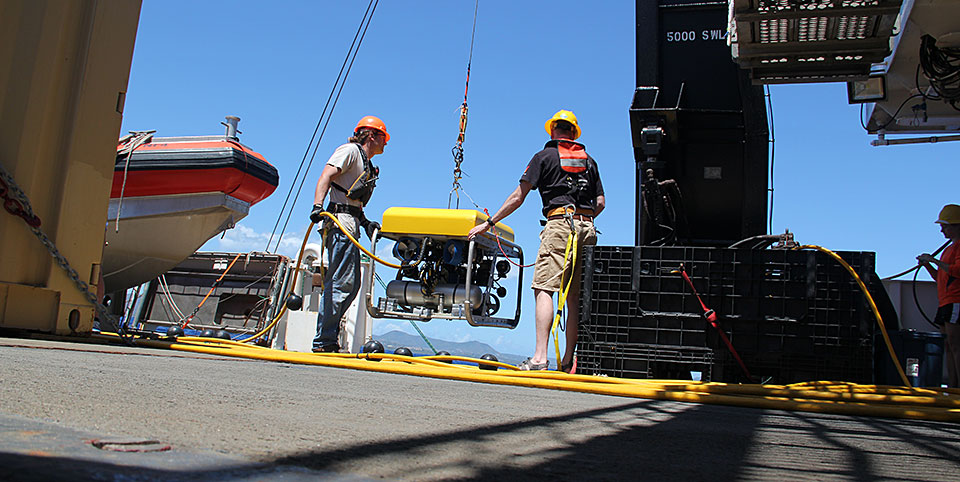#ScienceAtSea
Gallery: Launching the Remotely Operated Vehicle
Researchers onboard the NOAA Ship Nancy Foster launch a remotely operated vehicle (ROV) into the waters off St. Croix several times a day during the eight day mission. The ROV provides the scientists with "eyeballs" beneath the water to see the health of the ecosystem and to better understand what the ship sonar is capturing with multibeam data.
Photos and video:

Remotely Operated Vehicle (ROV) technician Jason White (background, left) and Bryan Costa, geospatial scientist, maneuver the ROV over the side of the ship for an evening dive on March 31, 2015. Middlebury College student Ryan McElroy (foreground), an intern on mission, guides the ROV tether along the deck to ensure it doesn't get tangled.

Remotely Operated Vehicle (ROV) technician Jason White (left), University of North Carolina Wilmington Undersea Vehicles Program, and NOAA oceanographer Tim Battista gently maneuver the ROV over the side of the NOAA Ship Nancy Foster.

Oceanographer Tim Battista looks on as the ROV is lowered by a J-frame crane into the ocean.

Once the ROV is safely away from the ship, ROV technician Lance Horn drives the ROV to the seafloor. Then, he carefully steers the vehicle to within feet from the bottom of the ocean. At the same time, he operates several cameras attached to the ROV. The cameras allow the scientists to take photos and shoot video of the coral reefs and fish on the seafloor.
This short video provides a brief snapshot of operations during a ROV launch. Launching the vehicle typically takes about 30-45 minutes, depending on the depth of the seafloor. Once the ROV is on the seafloor, it may spend several hours exploring.